Part 2 – Mom’s Journey
Vaginal Birth – Placenta to End of Acute Recovery Phase
SEPTEMBER 17, 2021 BY JULIANA PARKER, RNC-OB, C-EFM
Do not consider the opinions expressed here as medical advice (click to read more)
All of the content provided on the website are for informational purposes only and DO NOT CONSTITUTE THE PROVIDING OF MEDICAL ADVICE and are not intended to be a substitute for independent professional medical judgment, advice, diagnosis, or treatment. IF YOU HAVE A MEDICAL EMERGENCY, CALL YOUR DOCTOR OR 911 IMMEDIATELY. To read the entire disclaimer, click here.
Welcome to Part 2 of What to Expect AFTER Giving Birth – A Comprehensive Guide. This is a continuation of your postpartum journey and covers everything from delivery of your placenta to the end of the acute recovery phase. Be sure to read Part 1: Birth to Delivery of Placenta if you missed this article. Part 2 is broken down in two segments. Part 2A is everything that happens with the mother during this period and Part 2B is everything that involves the baby during this period.
In this article, we will discuss:
Pitocin (aka Oxytocin)
Once your placenta separates, all of the vessels that were attaching the placenta to the uterus will now be bleeding into the uterus, shedding it’s lining. Because of this, you will begin to bleed similar to the heaviest day of a period. Your body will then shrink your uterus down to about the size of an orange. As a result, your uterus, which was right under your breasts just moments ago, will now be right at or below your belly button.
The healing begins by your body’s amazing uterus contracting and squeezing the blood vessels preventing excessive bleeding.
Let’s face it, your uterus just went through quite a work out having a baby, there are times when your uterus is simply tired and has a hard time producing more contractions. To ensure your uterus has the energy it needs, Pitocin is administered through your IV.
Pitocin is the synthetic form of your hormone Oxytocin. It is the hormone that stimulates contractions. Think of it as your uterus’ 5-hour energy drink.
Don’t worry, since your baby is out of your body, the discomfort from the contractions will likely be minimal.
NOTE: Every birth tends to make these “after-birth” contractions stronger and more painful. By baby number 2 or 3, your afterbirth contractions may cause more discomfort than it did with your first baby.
Shaking
Be prepared for some major shaking after you deliver your baby. The shaking likely start in transition and will continue for about an hour after you have your baby. It can be a bit unsettling. Try not to fight the shakes and remember that in time, they will settle and eventually disappear.
If you are not feeling overheated, a warm blanket can be really helpful. I have found in my years that placing a warm blanket across the back of your neck seems to really calm those shakes.
Inspection and Repair
Your provider is going to begin a thorough inspection of your vagina including your labia, perineum and birth canal checking for tears. Most first-time mothers tear at least a little.
If an episiotomy was performed, the doctor will inspect this as well looking for extended tearing beyond the episiotomy.
Most tears or episiotomies require sutures to repair. If you delivered with an epidural, not to worry, the epidural, even though turned off, is still providing pain relief and will cover any discomfort during your repair. If you delivered without an epidural, your provider will offer you a numbing injection to ensure your repair is pain free.
More good news, your sutures dissolve and do not need to be removed.
IMPORTANT NOTE: When using the bathroom you will want to spray with a peri-bottle and blot dry, avoid wiping.
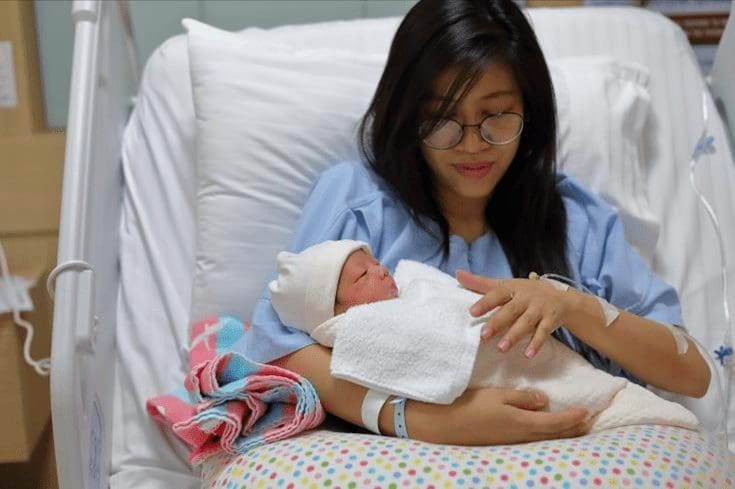
Clean-Up
When your provider has completed your repair, the nurse or your provider will take warm soapy water and wash your legs and whole lower region. Fresh pads and mesh underwear will be applied. Your nurse should also put some fresh bed pads under you.
Ice packs will be placed inside your mesh underwear and are really helpful to reduce swelling and minimize pain. Speaking of swelling, your labia may plump up like two ballpark hot dogs from all of your pushing. Be prepared to look “different” for some time after birth. Ice will be your friend. You will want use these ice packs for at least 24-48 hours. Some people like to continue ice packs when they get home to minimize discomfort.
Your nurse should also provide you with a fresh gown. There will likely be blood, aminotic fluid and maybe even some baby urine or meconium on your gown. This will be a welcome change of clothing.
Reassembly of Bed
For your delivery, the bottom part of your bed was likely removed and stir-ups were provided for you to rest your feet between pushes. When your provider is done with your inspection and repair, the stirrups will be removed and your bed will be reassembled.
If your facility offers blanket warmers, having one placed on top of you after your clean up feels wonderful! It is very comforting for new moms (and babies).
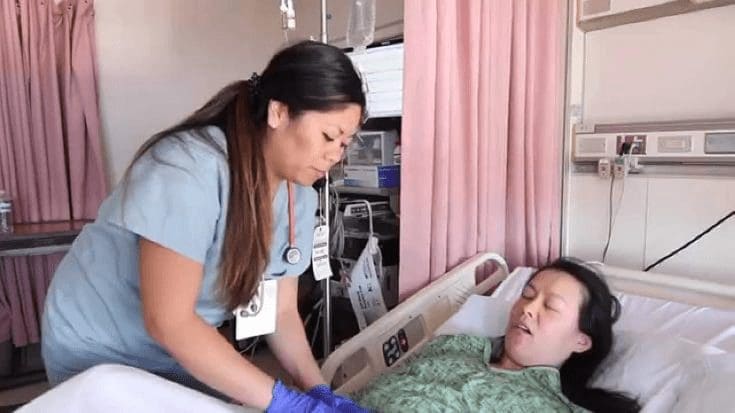
Fundal Checks – Monitoring Your Bleeding
From the time your placenta delivers to the end of the your acute recovery phase and beyond, your nurse will begin performing fundal massages every 15-minutes while monitoring your bleeding.
Massage you say? Don’t get too excited, this “massage” is an aggressive push on your belly right where the top of your uterus lies. Most people let out a little “umph” noise when we perform this check. It is our way to ensure that your uterus is contracting as it should be. While we perform these checks, we will also peek under the covers and into your underwear to monitor your bleeding as we massage.
The first hour after delivery is the most critical observation period. Your nurse will be in your room quite a bit during this hour. After the first hour, if your bleeding is stable, your fundal massagges will become less aggressive and be performed further apart.
Vital Signs
At this point you will be very tired of your blood pressure cuff and will surely be trying to rip it off. Sorry, not so fast. Your BP cuff and your pulse oximeter will need to stay in place. We will be getting your vital signs every 15 minutes for the first hour to 90 minutes. If everything is stable after this time period, we can then remove all of your monitors. Freedom at last!
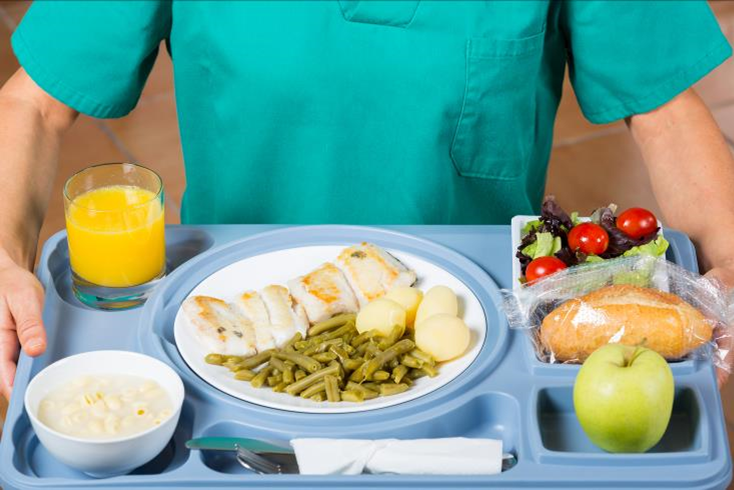
Food and Drink
Yes! You can eat and drink whatever you would like!! Finally!! It will feel really good to eat your first meal, so try to make it something special. The hospital will provide a room service menu, but you are more than welcome to bring some homemade food in also.
Hospitals provide patient microwaves and patient refrigerators on the labor and postpartum floors. Just remember to label your food with your name and date. Keep in mind that if the date on your food is more than 48 hours old, housekeeping may toss your food (container and all) into the trash.
IMPORTANT TIPS: 1) use only cheap disposable containers; 2) redate your food if it has been a couple of days. The tossing of food includes store-packaged freezer meals that have never been opened, so be sure your partner is keeping dates current.
Pain Medication
You will be offered pain medication for soreness from a tear or episiotomy and after birth contractions. Ibuprofen 600mg every 6-8 hours and/or Tylenol 650mg every 6-8 hours is typically offered. These medications can be taken individually or in combination with each other.
If your tearing is minimal, try to stick to using only these medications instead of stronger medications. Stronger medications can cause major constipation, not very fun when you just gave birth.
If your tearing is more extensive, you will be offered stronger medications as needed. Talk to your doctor about stool softeners in an attempt to avoid constipation. This may include one or two varities of stool softeners. I also encourage you, as best you can, to always start with lower doses, only adding more if absolutely needed. Trust me, you will thank me for this advice. The constipation is no joke and is not a fun side effect for new moms.

Rest
You may now rest! Well kind of, you do have a new beautiful tiny human being to take care of and your nurse will be in the room a lot. So by rest, I mean, you no longer have to labor or push. After feeding your baby, suggest your partner do skin-to-skin. This is a great way for your partner to bond with baby and allows you to have a moment to close your eyes.
The time that elapses from the delivery of the placenta to the end of the acute recovery phase can vary between 1.5 hours to 4-5 hours. While napping may be short and interrupted, take advantage of every moment you can nap.
Assisted Walk to the Bathroom
After the epidural medicine wears off, which takes anywhere from 1-4 hours, your nurse will assist you to the bathroom.
IMPORTANT NOTE: Do not get up by yourself (whether you had an epidural or not). If you have to use the bathroom, use your call bell and call your nurse in the room. You have lost blood, similar to donating blood. Many people pass out after losing blood. Be certain a nurse is with you for your first TWO trips to the bathroom. After two successful trips, you will be granted permission to get up on your own.
By now your nurse should have provided you with sanitary supplies including a peri bottle, pads, mesh underwear, tucks packs and extra bed pads. These items are yours to keep. If there are any leftovers when leaving the hospital, take them home.
Peeing may or may not sting, but using a peri-bottle will reduce the burn. It’s just a little plastic squeeze bottle. Fill it with warm water and spray while urinating to dilute the urine. Use this with every bathroom trip.
After using the bathroom, blot, don’t wipe to ensure you don’t tug on a suture.
IMPORTANT NOTE: If you are not able to urinate, there is a possibility the nurse will have to do an in and out catheter. This mostly depends on the position of your uterus. If your uterus is displaced by the bladder, it can increase your bleeding and emptying your bladder may be necessary. A very full bladder will sometimes be difficult to empty without assistance. If you had an epidural, it could be residual numbness that has not worn off yet.
Epidural Removal
Every facility has their own protocol. At my hospital, I was responsible for removing patient epidurals. Other hospitals the anesthesiologist is responsible. Either way, someone will take out your epidural if you had one. This is completely painless except for the removal of the tape on your back.
WORDS OF ADVICE: I always took the epidural out when I had my patients in the bathroom and we were about to transfer to postpartum. Some staff will remove the epidural much earlier, even immediately after birth. Ask your hospital staff members to leave it in for about 1-2 hours after birth. This way if there are any bleeding complications, it can be used for pain management in case the doctor has to manually examine your uterus. After 1-2 hours, it is usually safe to come out.
Unexpected Scenarios
There are a few complications that could occur after the delivery of the placenta. This may possibly extend your stay on labor and delivery and extend your acute recovery phase.
If at any point during your recovery you begin to feel faint, lightheaded, dizzy, suddenly very sweaty or feeling like you may pass out, call for your nurse immediately (if she is not in the room). Begin giving yourself a fundal massage until the nurse arrives, it is probably due to heavy bleeding.
NURSE TIP: If you feel like you are in an emergency situation, if you pull your call light out of the wall, it will set off alarms. Alternatively, your partner can push the rapid response button on the wall in the room. Familiarize yourself with these buttons when you arrive, so you know where they are in the event of an emergency.
If your blood pressure elevates during postpartum, your doctor may order some additional tests to rule out pre-eclampsia. If you are diagnosed with pre-e, you will be placed on an IV medication called Magnesium. Magnesium requires you to receive one-on-one care and stay on the labor and delivery unit until it is completed, usually 24 hours later.
Conclusion
You are typically in the labor and delivery room for 1-3 hours and then transferred to your postpartum unit via wheelchair, with baby in your arms or in a crib, where you will stay until discharge.
If you are in an LDRP, then you will stay in the same room but will see your nurse less often. Be sure you call light is always within reach.
In part 2B, we will discuss your baby’s journey from delivery of your placenta to the end of acute recovery.
Featured Courses

The Childbirth Master Class
If you are pregnant and want a vaginal birth, with or without medication, then start here. Learn about the entire birthing process including all interventions and ways to increase your chance of success!
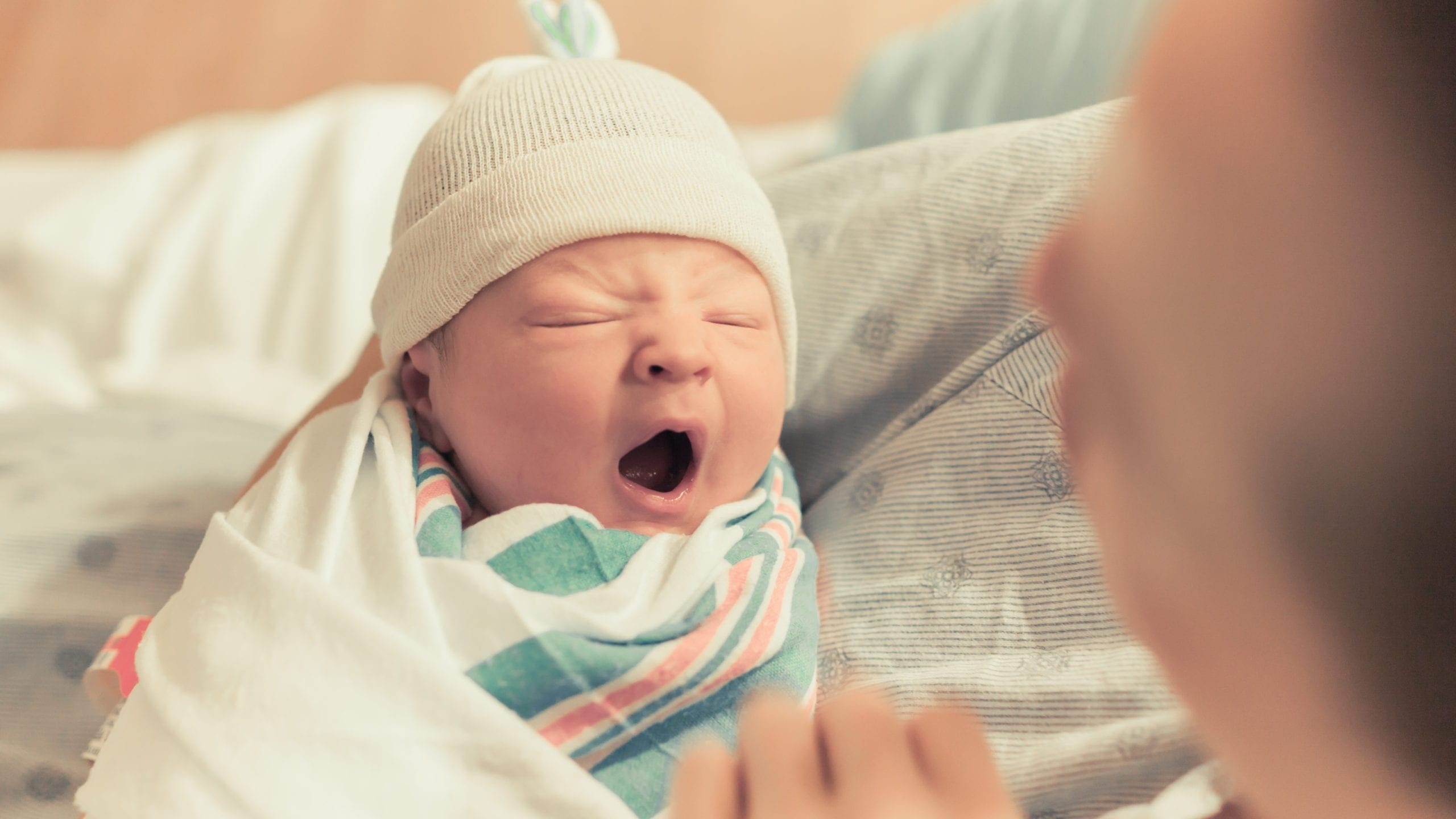
Elementary Newborn Care
If you have little or no experience with babies, then you won’t want to miss this program. We will cover everything you need to know about your newborn from simply holding to changing diapers!
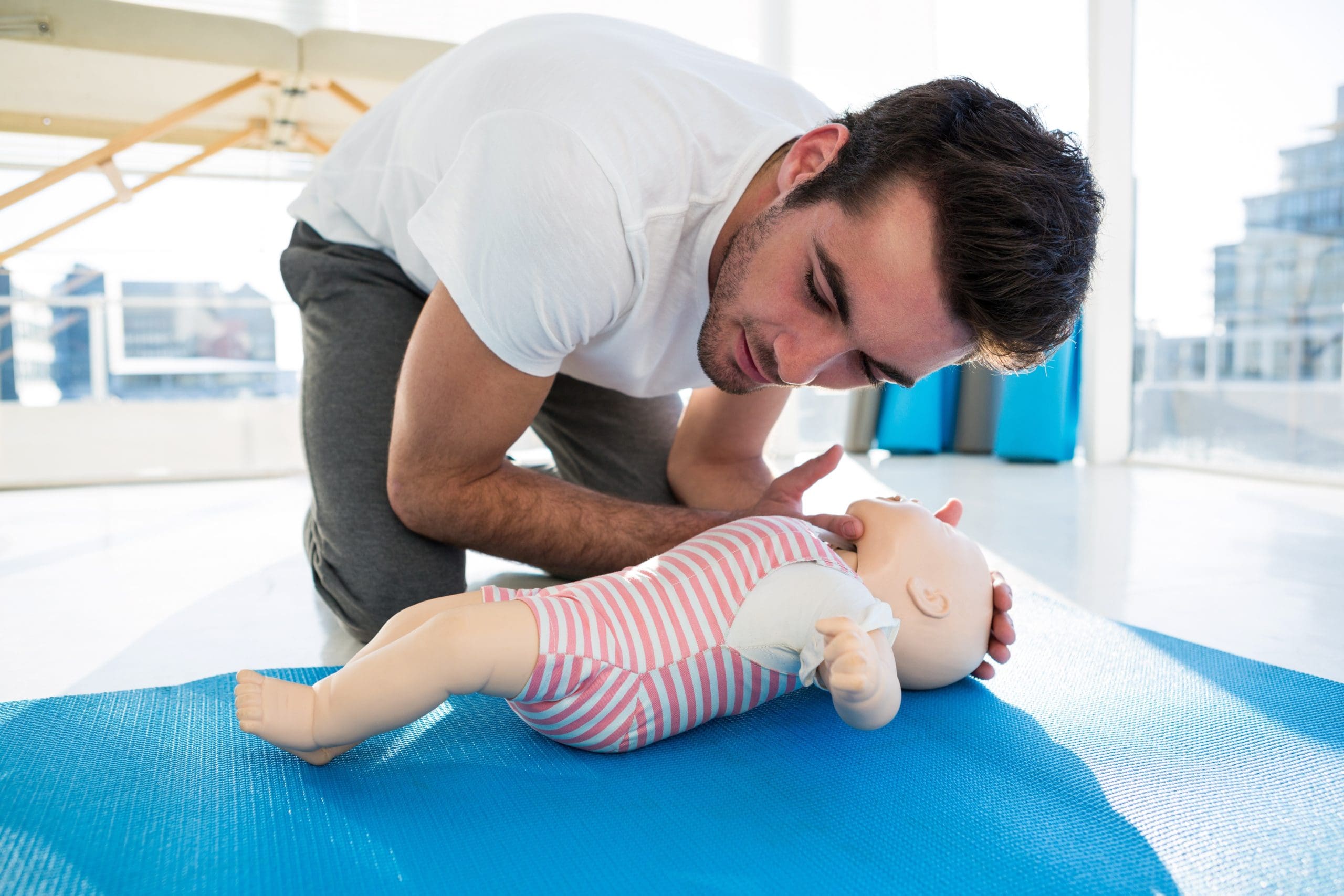
Childproofing and CPR
Learn to set up a safe environment, avoid unintentional accidents and manage emergencies. You’ll learn how to save a life in less time than it takes to watch a great movie!

